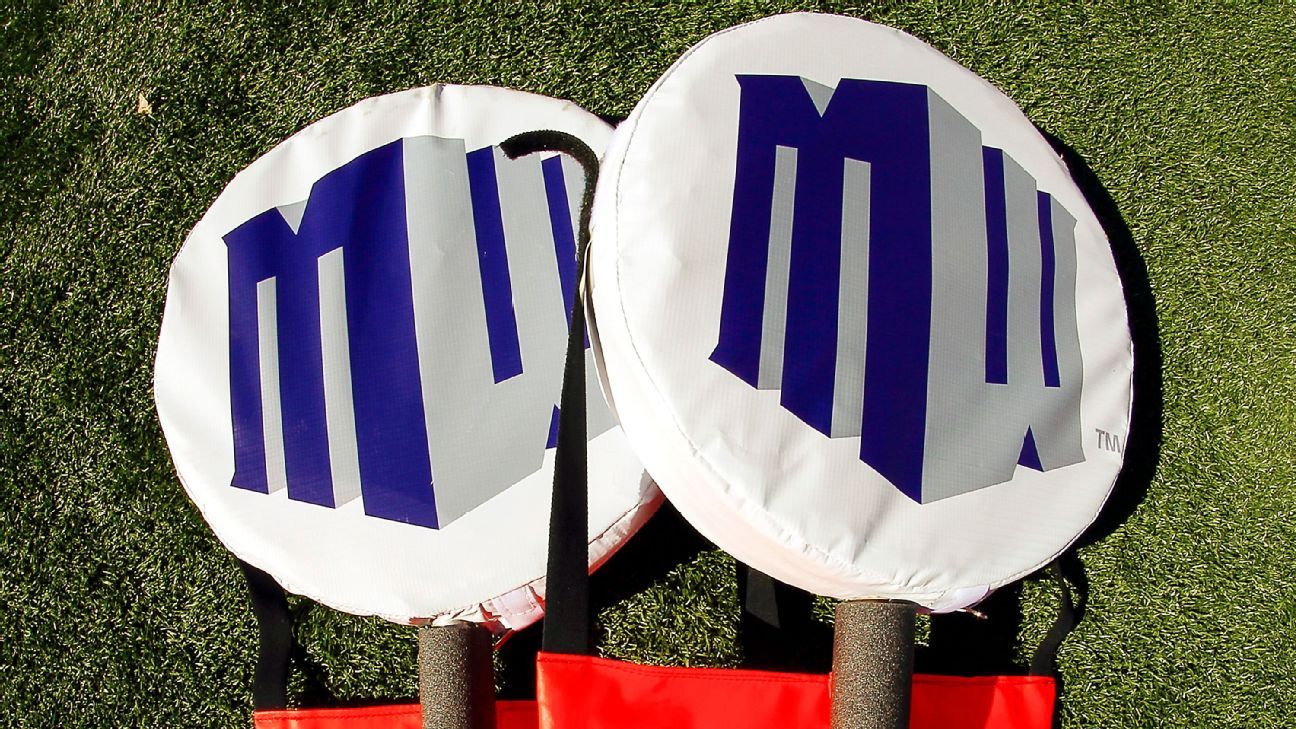As Stanford and California await a decision from the ACC about possible membership, the Mountain West Conference remains on standby, ready to respond however those dominos fall.
After the collapse of the Pac-12 last week, the MWC has found itself in a position of strength and stands as a potential landing spot for the remaining four Pac-12 schools: Cal, Stanford, Oregon State and Washington.
How quickly the trickle-down effect reaches the MWC will be determined mostly by forces out of its control.
“It is about what’s happening with the ACC or whoever [Cal and Stanford] are talking to,” MWC commissioner Gloria Nevarez told ESPN on Thursday.
If Cal and Stanford are accepted into the ACC — a possibility that hit roadblocks Wednesday evening — there is a widespread expectation that Oregon State and Washington State would move to the MWC, sources told ESPN.
If the ACC does not add Cal and Stanford, however, it’s less clear how things will play out. Since Friday, when five of the remaining nine Pac-12 schools announced they were leaving, the MWC has been gaming out various scenarios.
“A lot of it is just trying to sort fact from fiction out there,” Nevarez said. “There’s just so much information about what’s going on, and not all of it is true. From my perspective, it’s been a matter of connecting with our athletic directors and presidents and contacts that I have in the industry to try to provide our board the best information out there.”
The American Athletic Conference would also be willing to consider adding all four remaining Pac-12 schools, sources told ESPN.
Nevarez declined to provide details about whom she has communicated with or what specific scenarios have been discussed, but stressed the MWC is open to considering several possibilities.
That includes, but is not limited to, the idea of Stanford and Cal belonging to the MWC in all sports other than football. This could come about if Stanford and Cal were to choose to go independent in football or find a current Power 5 conference to join as football-only members.
“We certainly have precedent for that because Hawaii is an affiliate football-only member currently,” Nevarez said. “We’re open to everything. Nothing is being shut down at this point.”
Multiple sources expressed skepticism this week that either Cal or Stanford would be willing to become full-fledged members of the MWC, citing the discrepancies in academic standards between their schools and the current conference members. However, the longer the process drags on and the schools remain without a home starting in 2024, the more likely that stance could change.
“The irony is that line of thinking contributed to where they’re at now,” one FBS athletic director told ESPN, noting the Pac-12’s recent fruitless expansion considerations were heavily influenced by academic profiles.
One possibility to consider is some kind of merger between the Pac-12 and MWC. Despite the Pac-12’s demise, the league’s 108-year history provides significantly more brand value than the 25-year-old Mountain West. How a merger would be structured, though, would be extremely complicated.
“There’s just so many questions that would have to be asked and answered, but I harken back to how great the Pac-12 is and was,” said Nevarez, who went to law school at Cal and worked at the Pac-12 for nine years as the senior associate commissioner. “Think about all the assets, the brand, the Student Athlete Health Summit, all the great things they’ve done.
“It just breaks my heart that those things are in jeopardy.”
The MWC bylaws make it cost prohibitive for any schools to leave to join the Pac-12 on their own. Each would owe a roughly $34 million buyout without the guarantee of a media deal on the other side much better than what they currently have in the MWC, where they earn roughly $6 million per year.
The nuclear option would be for the league to dissolve — making the schools free to join the Pac-12 without a buyout — but that would require nine of the 12 schools to vote in favor, something multiple sources said has almost no chance of happening. At minimum, the Pac-12 would have to have an iron-clad media rights deal lined up that guarantees a significant improvement to the current MWC deal, which — especially given the Pac-12’s struggle to get a deal done before the collapse — is unlikely to materialize.
“It’s tough getting nine to vote on a football schedule, let alone the disillusion of a sure thing, to go toward maybe a speculative thing,” Nevarez said. “I think that’s what our exit fees and our voting thresholds are designed for. If there is the will of nine, that means that there’s a better thing out there.”
On Tuesday, Stanford coach Troy Taylor expressed optimism the Cardinal will remain at the highest level of college football.
“I think the players that committed to us and came here, they want to play Power 5 football, and that is what our intention is with this university,” Taylor said. “I can’t imagine anything else.”
If the ACC passes, he might be forced to. The Cardinal could perhaps keep its Power 5 status as an independent, similar to Notre Dame, but the school would then have to decide if that is a better existence for its student-athletes, fans and bottom line than a move to the MWC.
